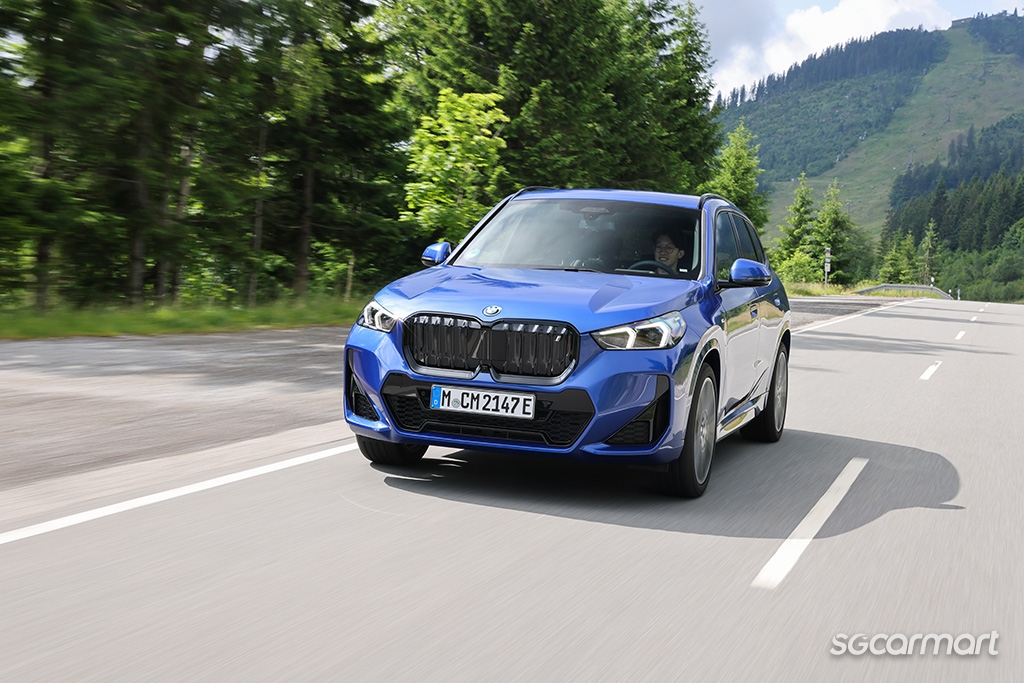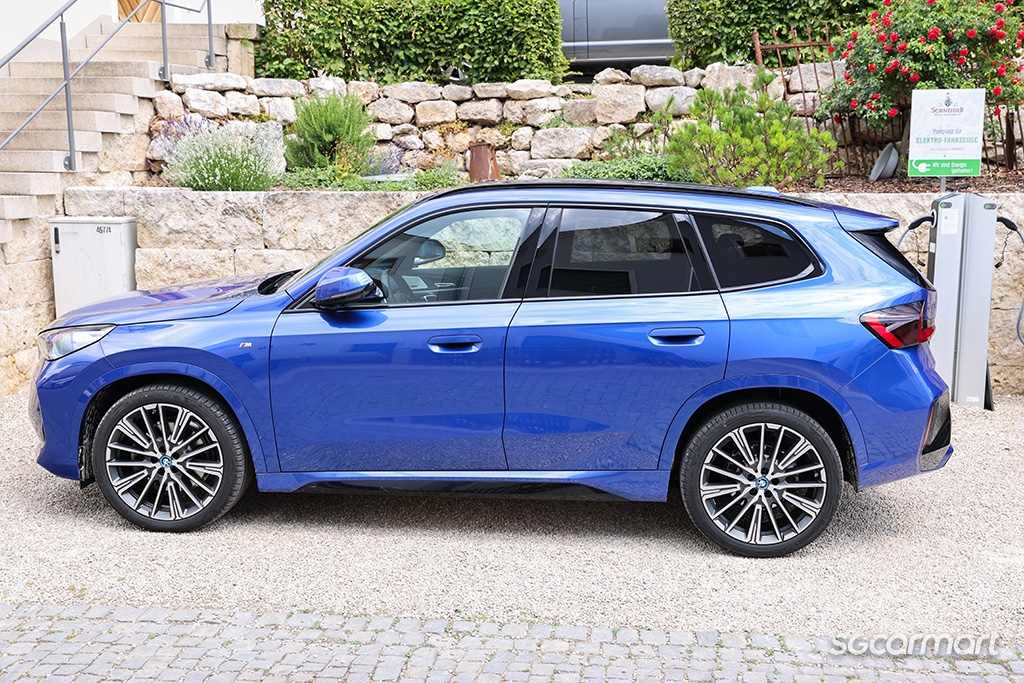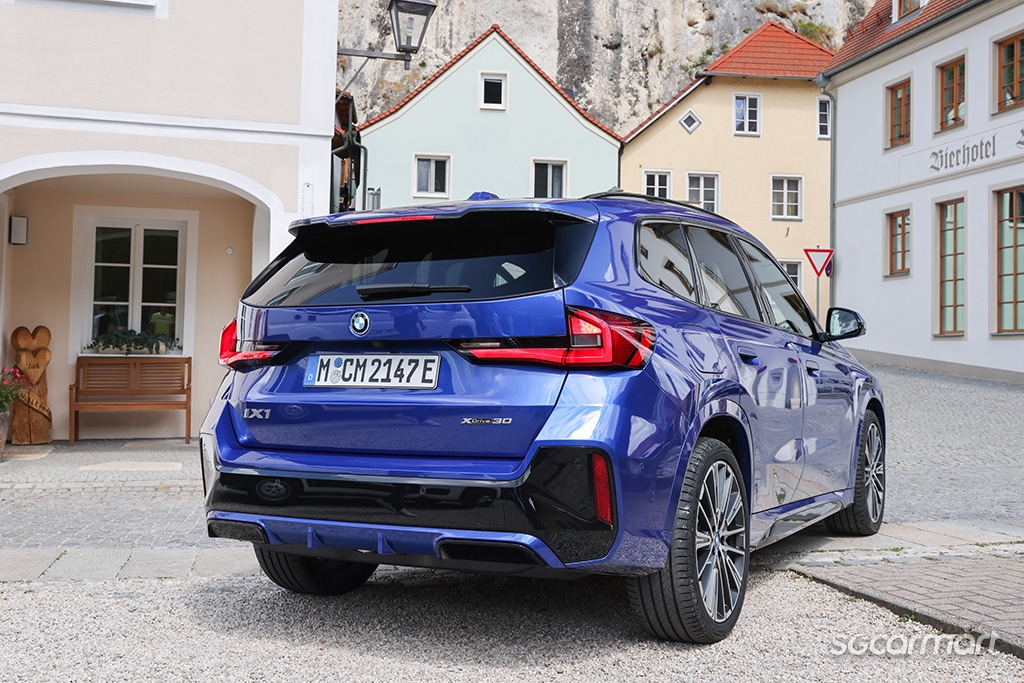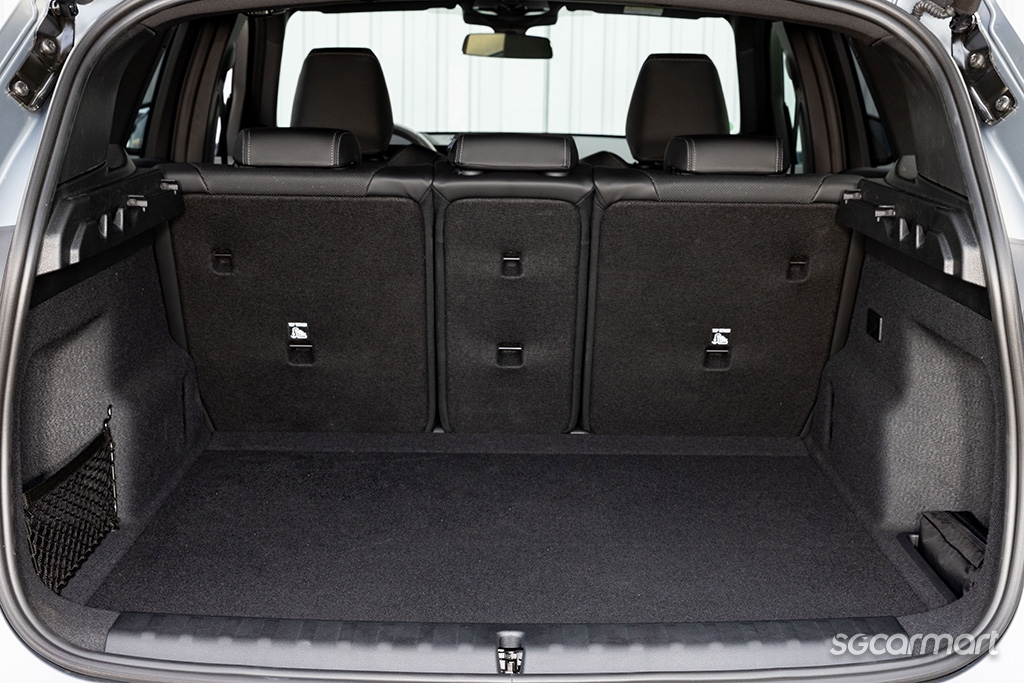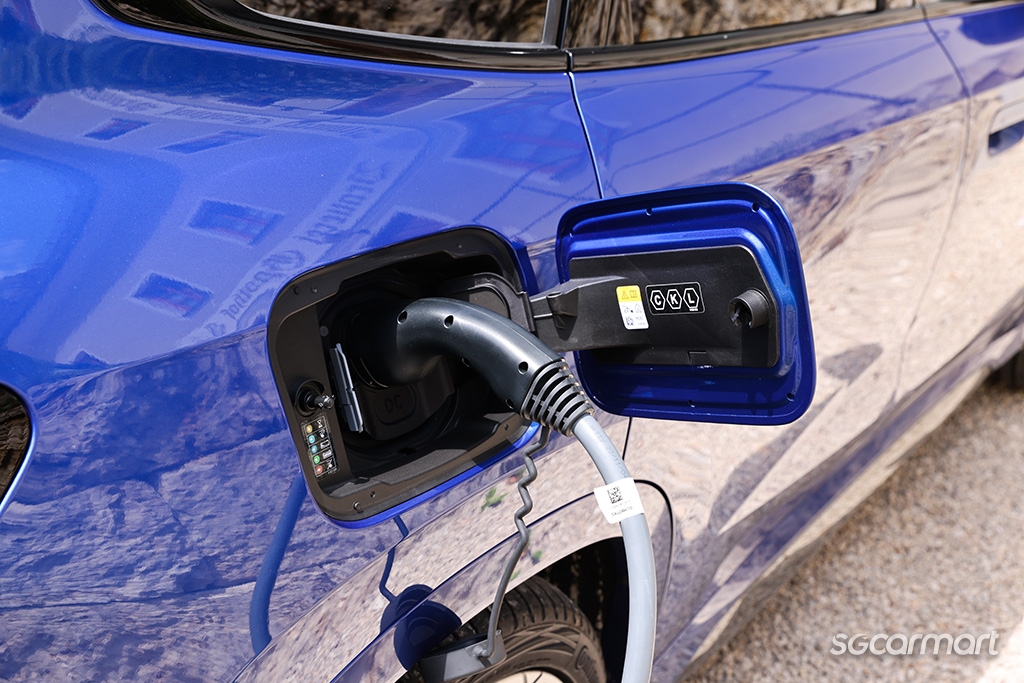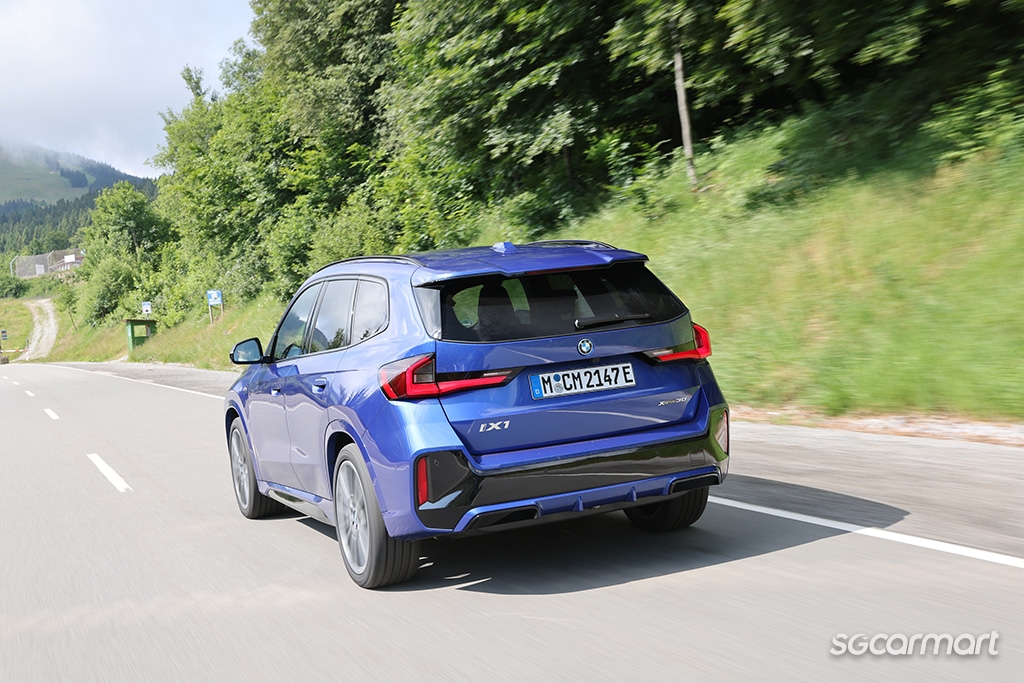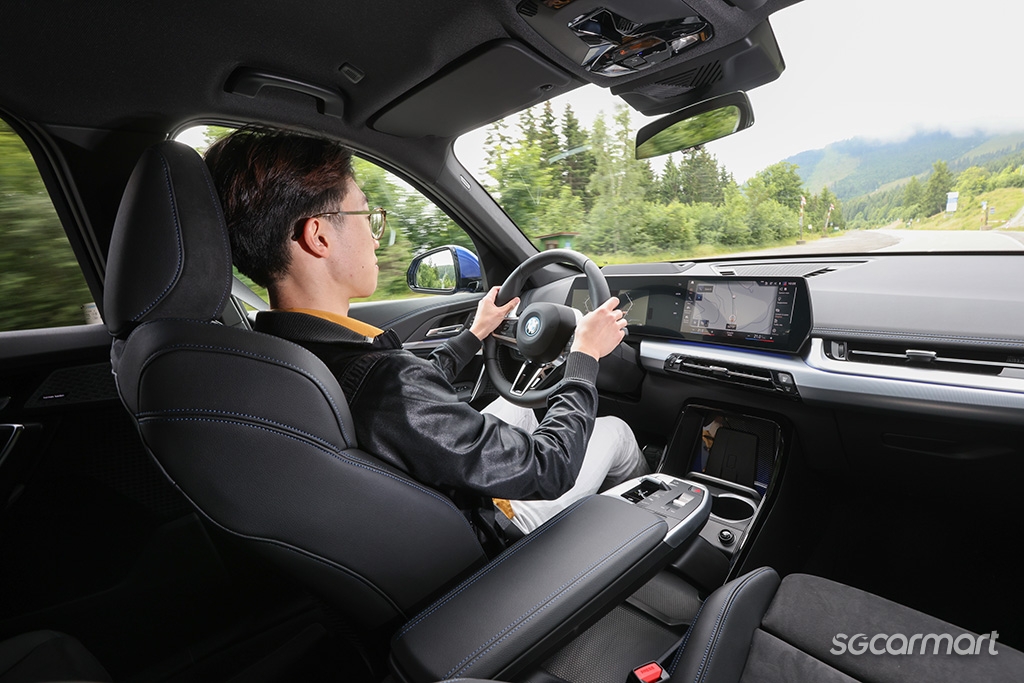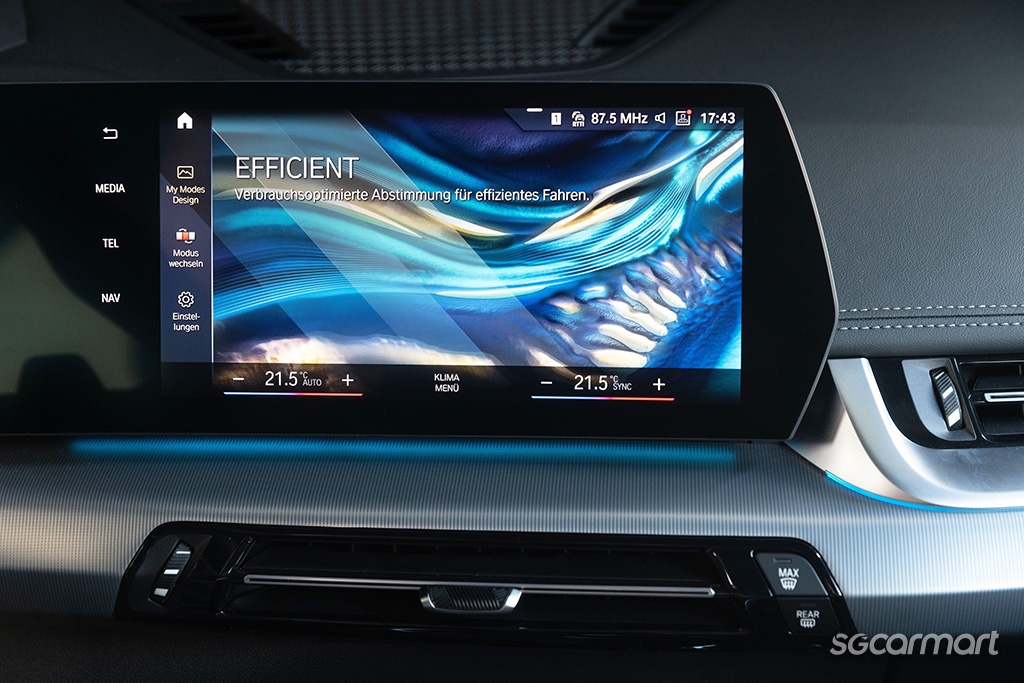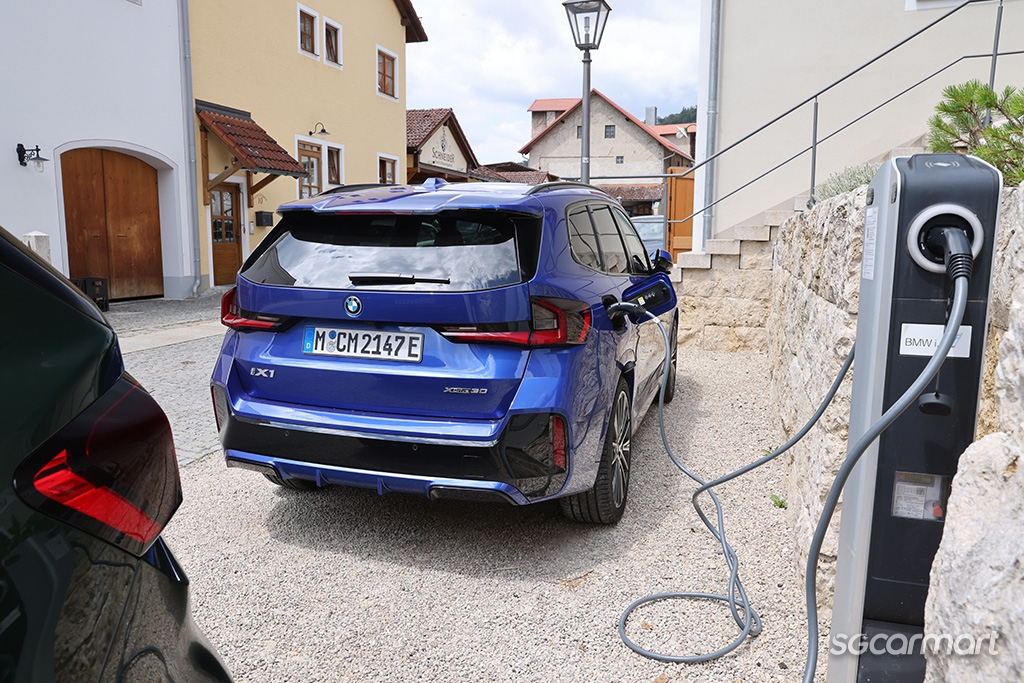BMW iX1 First Drive Review
01 Jul 2023|14,681 views
What We Like
More than sufficient power for a non-performance crossover
Uncompromised space over X1
Excellent ride quality, cabin insulation, and overall refinement
Works just as well, if not better as an EV on the whole
What We Dislike
Ironically, a single motor variant would feel more coherent with the car’s identity
Eco tyres not the most grippy
Small this uncannily familiar-looking crossover may be (at least compared to the many other cars in BMW's lineup). Yet outsized is the significance it carries for the Bavarian firm.
Not since the i3 has BMW launched a BEV internationally in the compact car segment with its renewed i offensive in recent years. Instead, when one thinks 'electric BMW' today, images of its luxe-barges - the iX SUV and i7 limo - or its mid-sized offerings such as the i4 and iX3 come to mind. In other words, those hunting for a smaller footprint (both carbon and in a physical sense) have been left hanging thus far.
BMW, however, has gladly answered the call. With this now - the first ever iX1 - we won't have to wait much longer.
We say small, but the iX1, using the exact same body and platform as the combustion-engined X1, isn't what one might call tiny in reality. After all, the third generation of BMW's baby SUV is also the biggest one thus far.
The earliest press photos showed the iX1 wearing blue accents on its front and rear aprons as well as on its side sills to denote its greener identity. Having said that, this is all a matter of spec; the test unit we got to drive was kitted without them. As such, it would be nearly impossible to tell the iX1 apart from the X1 if it whizzed past you on the Autobahn.
The only retained flourishes are extremely subtle: An 'i' badge on the left front kidney grille, both the front and rear BMW badges encircled in blue, and of course, the 'iX1' badge on the lower left of the tailgate.
In current-generation form, the X1 arguably takes honours as one of the smartest-looking compact crossovers - if not the smartest - to come out of BMW's design department over the last few years, so not tinkering with that formula works well. The rear, with its 3D L-shaped taillights, is especially delicious. Of note is that the iX1 has slightly less ground clearance and height - about 30mm - but one is unlikely to pick this up even in person.
A similar set-up greets occupants on the inside, where the rear seats are no less commodious despite what's drastically different underneath, and still offer a flat floor. The only notable difference, perhaps, is a boot that is 50 litres smaller in capacity - but even so, the iX1 still easily leaves combustion-engined rivals in its segment in the dust.
Likewise, beyond a steering wheel where the BMW badge is once more encircled proudly in blue, the same Curved Display, bringing over both screens in the same sizes, greets the driver. There are additional elements that cohere with the EV experience, most notably an additional bit on the instrument cluster to denote when the car's regenerative braking system is putting charge back into the batteries. But yet again, these are all subtle differences.
On that note, the iX1's 64.7kWh high-voltage battery gives it a WLTP-rated range of up to 440km; our driving patterns, over the hilly (mountainous?), winding terrain of Northeastern Bavaria would have returned something closer to 370km, which is a satisfactory, if not outstanding figure.
Perhaps more impressively, the car's ability to support DC charging at 130kW brings its battery's state-of-charge from 10 to 80% in just 29 minutes, while an 11kW AC wall socket will take care of a full recharge in 6.5 hours. Among EVs on the market today, these are decent figures.
BMW has thus far released only one powertrain variant of the iX1 - the xDrive30 - and as the name suggests, that means the car is all-wheel, rather than front-wheel driven like the X1 sDrive16i Singapore has gotten. Combined, the two identical motors residing separately on the front and rear axles produce 230kW (304bhp) and 494Nm of torque.
Putting things into context, the iX1 more than doubles the power and (instant) torque of the X1 sDrive16i. To go a step further, it has more power than the locally sold variant of the iX3, and even the freshly-revealed, properly hotted-up X1 M35i. The car is no slouch unsurprisingly, dusting off the century sprint in a very not-shabby 5.6 seconds. Returning briefly to Singapore's context, though, there is the as-yet unanswerable question of whether a single-motor powertrain would cohere better with the car's more mass-market identity instead.
Coming after cars like the iX3 and i4, the once-novel silence and immediacy of the acceleration - if you choose to turn the IconicSounds off - is now less shocking than it is satisfying. It's not that the iX1 isn't capable of punching forward in sharp, dagger-like stabs - but using the wealth of instant torque for blunter, smoother butter-knife slices through traffic feels more commensurate to its undramatic persona.
A crossover - even if well-powered and equipped with all-wheel drive - is still not one's weapon of choice for the winding passes interspersed around the Bavarian Forest, and you will not want to push the iX1 too far with the eco-tyres we had fitted.
Nonetheless, despite its weight and height, the car manages a decent sense of plantedness and balance up and down the rolling hills. Meaty steering is not part of the iX1's menu, but it's still responsive and quick enough, without interrupting its more naturally laid-back air.
Around these small Bavarian towns, the unbroken sense of silence, smoothness and linearity of the iX1's electric drivetrain far outpaces even the silkiest transmissions of a combustion-engined car. Then, out on the Autobahn, the car holds its own more than sufficiently on the fast lane; the lingering quiet in the cabin made all the more remarkable without any engine noise in the picture.
The brakes are nicely-weighted, too, to reassuringly bring the iX1, with the extra heft of its batteries and motors, to a stop (unladen, this is a 500kg heavier car than the X1).
Meanwhile, the regenerative braking system is easy to adapt to and to live with, since it can be adjusted to one's level of intensity. In all, this uncanny familiarity and ease-of-transition is exactly the experience BMW has perfected with its ICE-model based EVs.
Bookender: A small but vital next chapter
BMW has become extremely adept at utilising the same platform - and effectively the same package - across combustion engined models and their EV twins, and the iX1 adds another compact, yet also outsized chapter to that story.
One cannot help but wonder if the passage of time has dulled the car's potential shine. It's not that the iX1 isn't excellently put together. Like an X1, however, theatrics are not nestled within its deck of cards. Then again, if this was the first pairing that BMW had introduced, it's also not hard to imagine the undramatic manner in which it was finished drawing more praise. Just think back to the iX3.
Don't let the zero-surprise aura of the iX1 disappoint you. While the jury is still out on whether every sort of car should be fully electric, cars like this - which provide extra edges in comfort and effortlessness over their combustion-engined counterparts - show exactly how electric power can enhance rather than take away.
In fact, if BMW's vision of electric cars has thus far felt a little out of reach, the iX1 is a vital next step that now nicely bookends the i range - as the perfect foil to the iX, or even the i7.
Curious about other premium, all-electric crossovers on the market? Be sure to check these cars out below!
Despite its downsized battery, the Volvo XC40 Recharge remains delightful to pilot on our roads
What We Like
More than sufficient power for a non-performance crossover
Uncompromised space over X1
Excellent ride quality, cabin insulation, and overall refinement
Works just as well, if not better as an EV on the whole
What We Dislike
Ironically, a single motor variant would feel more coherent with the car’s identity
Eco tyres not the most grippy
Small this uncannily familiar-looking crossover may be (at least compared to the many other cars in BMW's lineup). Yet outsized is the significance it carries for the Bavarian firm.
Not since the i3 has BMW launched a BEV internationally in the compact car segment with its renewed i offensive in recent years. Instead, when one thinks 'electric BMW' today, images of its luxe-barges - the iX SUV and i7 limo - or its mid-sized offerings such as the i4 and iX3 come to mind. In other words, those hunting for a smaller footprint (both carbon and in a physical sense) have been left hanging thus far.
BMW, however, has gladly answered the call. With this now - the first ever iX1 - we won't have to wait much longer.
We say small, but the iX1, using the exact same body and platform as the combustion-engined X1, isn't what one might call tiny in reality. After all, the third generation of BMW's baby SUV is also the biggest one thus far.
The earliest press photos showed the iX1 wearing blue accents on its front and rear aprons as well as on its side sills to denote its greener identity. Having said that, this is all a matter of spec; the test unit we got to drive was kitted without them. As such, it would be nearly impossible to tell the iX1 apart from the X1 if it whizzed past you on the Autobahn.
The only retained flourishes are extremely subtle: An 'i' badge on the left front kidney grille, both the front and rear BMW badges encircled in blue, and of course, the 'iX1' badge on the lower left of the tailgate.
In current-generation form, the X1 arguably takes honours as one of the smartest-looking compact crossovers - if not the smartest - to come out of BMW's design department over the last few years, so not tinkering with that formula works well. The rear, with its 3D L-shaped taillights, is especially delicious. Of note is that the iX1 has slightly less ground clearance and height - about 30mm - but one is unlikely to pick this up even in person.
A similar set-up greets occupants on the inside, where the rear seats are no less commodious despite what's drastically different underneath, and still offer a flat floor. The only notable difference, perhaps, is a boot that is 50 litres smaller in capacity - but even so, the iX1 still easily leaves combustion-engined rivals in its segment in the dust.
Likewise, beyond a steering wheel where the BMW badge is once more encircled proudly in blue, the same Curved Display, bringing over both screens in the same sizes, greets the driver. There are additional elements that cohere with the EV experience, most notably an additional bit on the instrument cluster to denote when the car's regenerative braking system is putting charge back into the batteries. But yet again, these are all subtle differences.
On that note, the iX1's 64.7kWh high-voltage battery gives it a WLTP-rated range of up to 440km; our driving patterns, over the hilly (mountainous?), winding terrain of Northeastern Bavaria would have returned something closer to 370km, which is a satisfactory, if not outstanding figure.
Perhaps more impressively, the car's ability to support DC charging at 130kW brings its battery's state-of-charge from 10 to 80% in just 29 minutes, while an 11kW AC wall socket will take care of a full recharge in 6.5 hours. Among EVs on the market today, these are decent figures.
BMW has thus far released only one powertrain variant of the iX1 - the xDrive30 - and as the name suggests, that means the car is all-wheel, rather than front-wheel driven like the X1 sDrive16i Singapore has gotten. Combined, the two identical motors residing separately on the front and rear axles produce 230kW (304bhp) and 494Nm of torque.
Putting things into context, the iX1 more than doubles the power and (instant) torque of the X1 sDrive16i. To go a step further, it has more power than the locally sold variant of the iX3, and even the freshly-revealed, properly hotted-up X1 M35i. The car is no slouch unsurprisingly, dusting off the century sprint in a very not-shabby 5.6 seconds. Returning briefly to Singapore's context, though, there is the as-yet unanswerable question of whether a single-motor powertrain would cohere better with the car's more mass-market identity instead.
Coming after cars like the iX3 and i4, the once-novel silence and immediacy of the acceleration - if you choose to turn the IconicSounds off - is now less shocking than it is satisfying. It's not that the iX1 isn't capable of punching forward in sharp, dagger-like stabs - but using the wealth of instant torque for blunter, smoother butter-knife slices through traffic feels more commensurate to its undramatic persona.
A crossover - even if well-powered and equipped with all-wheel drive - is still not one's weapon of choice for the winding passes interspersed around the Bavarian Forest, and you will not want to push the iX1 too far with the eco-tyres we had fitted.
Nonetheless, despite its weight and height, the car manages a decent sense of plantedness and balance up and down the rolling hills. Meaty steering is not part of the iX1's menu, but it's still responsive and quick enough, without interrupting its more naturally laid-back air.
Around these small Bavarian towns, the unbroken sense of silence, smoothness and linearity of the iX1's electric drivetrain far outpaces even the silkiest transmissions of a combustion-engined car. Then, out on the Autobahn, the car holds its own more than sufficiently on the fast lane; the lingering quiet in the cabin made all the more remarkable without any engine noise in the picture.
The brakes are nicely-weighted, too, to reassuringly bring the iX1, with the extra heft of its batteries and motors, to a stop (unladen, this is a 500kg heavier car than the X1).
Meanwhile, the regenerative braking system is easy to adapt to and to live with, since it can be adjusted to one's level of intensity. In all, this uncanny familiarity and ease-of-transition is exactly the experience BMW has perfected with its ICE-model based EVs.
Bookender: A small but vital next chapter
BMW has become extremely adept at utilising the same platform - and effectively the same package - across combustion engined models and their EV twins, and the iX1 adds another compact, yet also outsized chapter to that story.
One cannot help but wonder if the passage of time has dulled the car's potential shine. It's not that the iX1 isn't excellently put together. Like an X1, however, theatrics are not nestled within its deck of cards. Then again, if this was the first pairing that BMW had introduced, it's also not hard to imagine the undramatic manner in which it was finished drawing more praise. Just think back to the iX3.
Don't let the zero-surprise aura of the iX1 disappoint you. While the jury is still out on whether every sort of car should be fully electric, cars like this - which provide extra edges in comfort and effortlessness over their combustion-engined counterparts - show exactly how electric power can enhance rather than take away.
In fact, if BMW's vision of electric cars has thus far felt a little out of reach, the iX1 is a vital next step that now nicely bookends the i range - as the perfect foil to the iX, or even the i7.
Curious about other premium, all-electric crossovers on the market? Be sure to check these cars out below!
Despite its downsized battery, the Volvo XC40 Recharge remains delightful to pilot on our roads
Thank You For Your Subscription.
- Identical Twin
- Few Compromises
- Silently Swift
- A Small But Vital Next Chapter



















